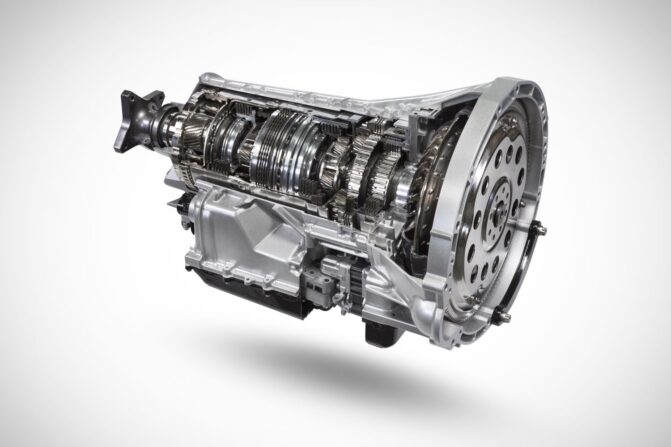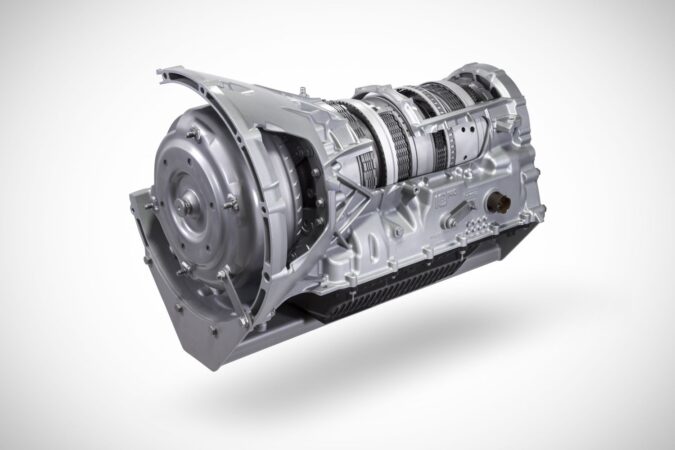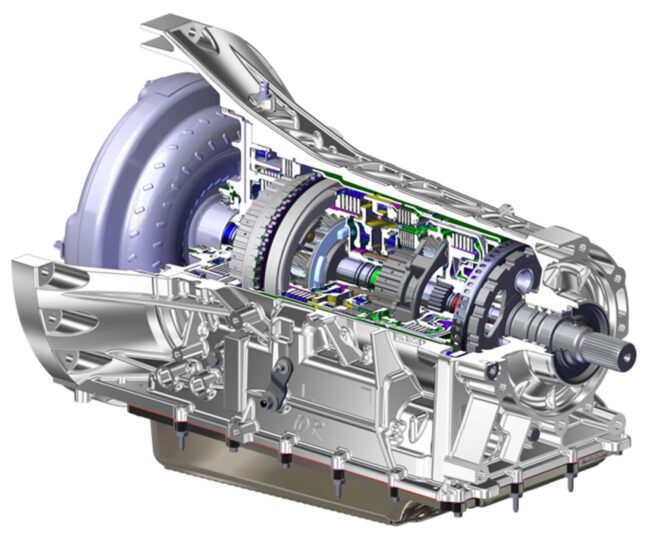Back in 2013, Ford and General Motors teamed up to co-develop a 9-speed and 10-speed gearbox. For Ford, this would culminate in the creation of the 10R80 10-speed, which they’ve fitted into light-duty vehicles such as the Ford F-150, and could also be used for heavy and medium-duty vehicles. Yet, the Ford 10-speed transmission isn’t immune to problems.
It’s clear that both GM and Ford benefited massively due to the economics of scale and sharing resources. Ford, in particular, would be able to use this 10-speed transmission for rear-wheel drive and all-wheel drive vehicles. But, while the introduction of this 10-speed transmission went off without a hitch, in recent years, we’ve seen numerous reliability complaints.
With that in mind, here are some of the most common problems with a Ford 10R80 10-speed transmission, including rough shifting, gear indicators not lighting up, and check engine lights. Oh, and if you have a GM 10-speed instead, these might still apply, since both these transmissions are comparable and share a lot of the same design and engineering…
1. Rough & Harsh Shifting
Most of Ford’s models that use this 10R80 10-speed transmission, including the (but not limited to) 2017-2018 F-150, 2018 Expedition, Mustang, and Lincoln Navigator were the most affected vehicles. The 10-speed automatic transmission, in particular, has been criticized for its sluggish gear changes. Or, on rare occasions, it shifted gears randomly.
The gearbox slipped by itself, and drivers were surprised to find their cars in reverse when they believed they were in the park. Gear changes might be delayed or abrupt, and some drivers have encountered diagnostic problem codes to accompany this. When this happens, a new software update must be installed to update the transmission control module.
To give the transmission control module (TCM) another chance to learn your driving style, make sure the software update is complete. The shifts ought to be way smoother this way. According to a lawsuit, the “10-speed 10R80 used in the Ford F-150 can pose life-threatening problems owing to violent shifting, shaking, resistance, and missed gears.”
2. Gear Position Indicator Won’t Light Up
Another issue that might impact Ford’s 10-speed 10R80 transmission is the gear position indicator not lighting up. Each time the driver changes gear (this also impacts the Ford F-150), gear shift indicators are intended to light up on display. YouTuber Johns Trucks 4Sale drew attention to the problem, claiming that many of his customers had contacted him for help.
He suggests turning on and off the power and the indicators in the hopes of solving the problem. The gear indicator vanished from the screen on the gauge cluster for no apparent reason, and many owners were left to figure out how to fix the problem on their own. While not dangerous per se, it can make determining what gear you’re in that bit harder.
3. Seeing A Check Engine Light
When the check engine light illuminates, it is never a positive sign. However, for some owners of Ford vehicles with the 10-speed 10R80 transmission, this has occurred more frequently than they would like. When this happens (way more than normal), a diagnosis of the transmission is required, which can reveal the active diagnostic error codes.
The majority of the time, the issue is due to the torque converter clutch (or its solenoid) valve binding. A valve inside the valve body could also be the source of the problem. Depending on the diagnosis, you may need to undertake a replacement of the entire valve body, which can cost a lot. Normally, a replacement valve body could cost you four digits.
4. Faulty Roll Pin Installation
Some models that were fitted with these Ford 10-speed 10R80 transmissions have been recalled since their launch due to customer concerns over the years. While researching the underlying faults with this transmission, Ford discovered that the roll pin was installed incorrectly during production. The 2018 Ford Expedition is one vehicle that was recalled.
You might be wondering what could go wrong if the installation during the manufacturing process is done incorrectly. Well, a car’s park function can be lost, according to tests. As a result, it can move even when parked, causing property damage and injuring or killing other road users. No doubt, the problem was so significant that recalls were necessary.
It all started with Ford releasing a statement in 2018. They stated that some models needed to be fixed due to faulty installation. Dealers examined the recalled vehicles to ensure that the roll pins were in the proper places. Drivers who needed roll pin adjustments and repairs were provided with the appropriate revisions and updates. All of this is done for free.
5. Rattling Noises From The Transmission
This is a likely issue for owners of the 2017-2019 F-150s. Some owners have previously reported hearing a rattling noise when accelerating, starting, or shifting. Hearing any noise coming from under the hood is often enough to cause you to pull over to the side of the road. It gets even worse when you turn on the engine and then hear a loud bang.
Transmission slippage issues in the 2018 Ford F150 are also included. The noises from the engine have been described in a variety of ways. The descriptions, which range from sluggish starts to scratchy sounds, all point to an issue with the engine or transmission. Unfortunately, owners who bring their cars in for inspection do not receive the assistance they require.
Some dealerships dismiss the reports, claiming that such noises are to be expected from an engine. Most of the time, owners drive away right after being told to ignore the noises. And, that the engine or transmission is good. Ford has yet to issue a recall for autos that have similar problems. And this puts the majority of drivers in a dilemma, so be cautious.
Other Miscellaneous Problems With Ford’s 10-Speed Transmission
Aside from the ones we mentioned earlier, here are some other notable problems with a Ford 10-speed 10R80 transmission:
- Overheating transmission; as owners note significantly rising temperatures during long drives. Especially, when towing heavy loads.
- Failure to engage gears; is another common issue with Ford’s 10-speed transmissions. Owners note not being able to shift into gears properly, particularly in Drive or Reverse.
- Harsh downshifts; which is similar to what we noted earlier. But, this time, it’s specific to downshifts, where some experienced jolts or a “bang” when the 10R80 downshifts.
- Delayed shifts; with a noticeable amount of lag between the time you move the gear selector, and the moment the transmission actually shifts into gear.
- Shudder from the torque converter; mainly with the torque converter’s lock-up clutch. This can cause a shudder or vibration, typically between 30mph to 45mph.
- Transmission slipping; when the 10R80 fails to engage a gear properly. Or, it slips out of gear while driving, causing a loss of acceleration.
- Erratic shifting; is those moments when the transmission shifts unpredictably or at inappropriate times. This causes lurching or surging during acceleration.
- Difficulty shifting; some owners found that these Ford 10-speed transmissions had challenges in shifting gears. Mainly, when shifting from a stop or at low speeds.
- Transmission warning light; which could indicate various issues… Low transmission fluid, overheating, transmission slipping, etc.




I’m looking at purchasing a 2021 mustang Mach 1 with the 10 speed auto.Do I opt for the standard tranny instead or did they get the issue fixed before this Mustang. All the video’s I watch on youtube love the auto.
I would still go for the auto be honest.
10R80 ford 10speed tranny is no good.